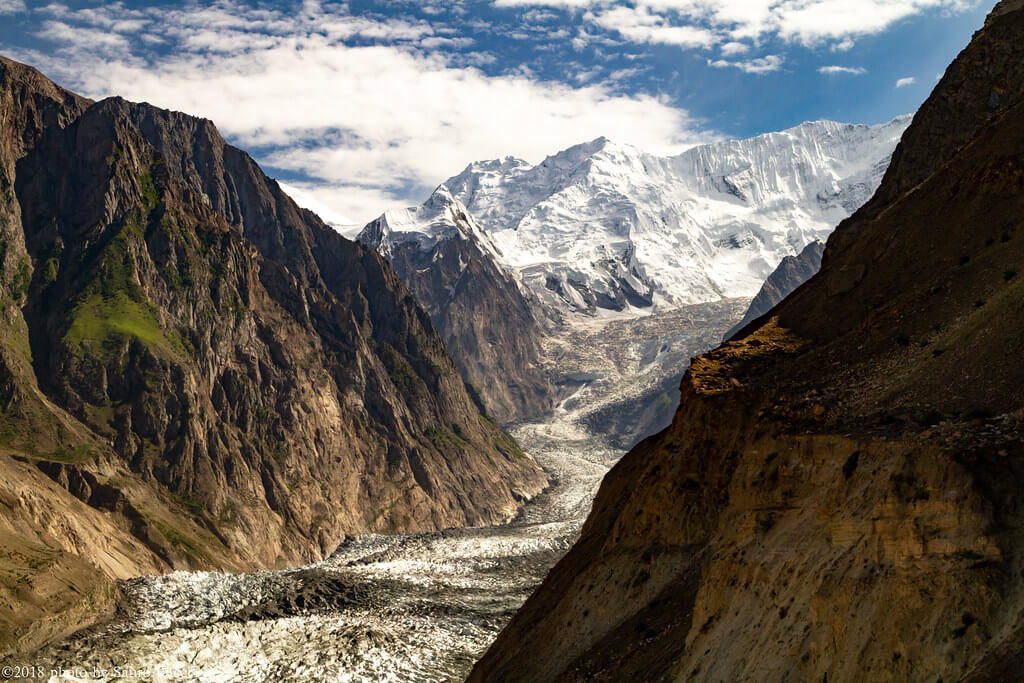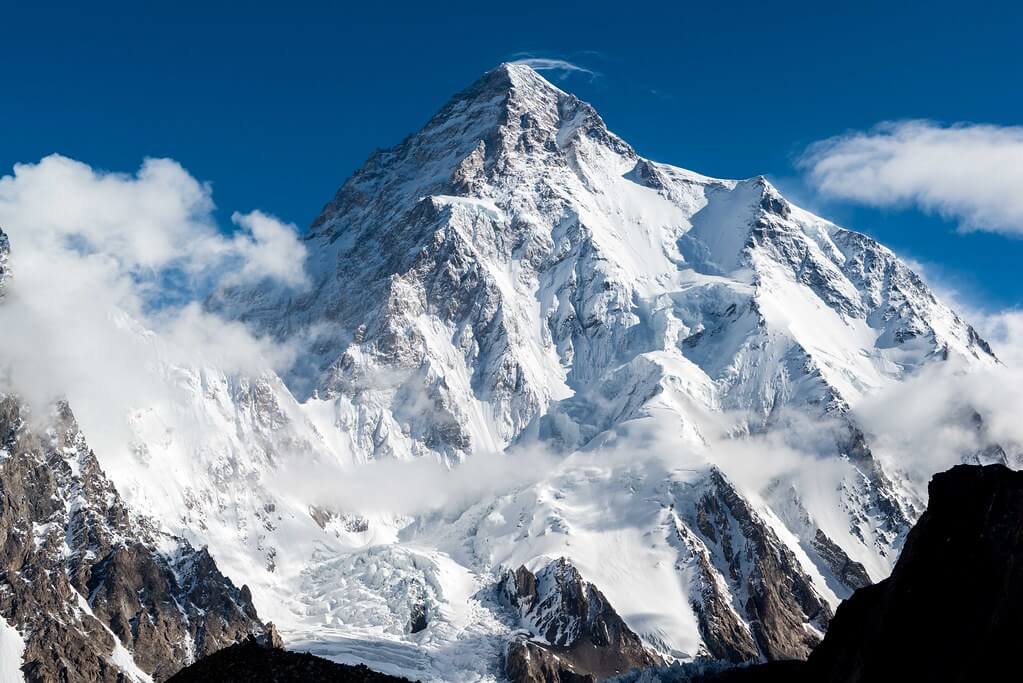Mountaineering in Pakistan: A Journey of Adventure and Discovery
Mountaineering in Pakistan is an amazing experience that provides the ultimate challenge for adventurers and nature lovers alike. The country is home to some of the world’s highest and most challenging mountains, making it an ideal destination for climbers and trekkers. Pakistan boasts five of the world’s peaks higher than 8000 meters, and it has been the site of some of the most amazing exploits in mountaineering. For decades, the fearless chilly and rocky mountains have provided a challenge to anyone who dared. Pakistan now has around 100 peaks open for mountaineering. Every year, many mountaineering teams receive permission to climb the world’s highest concentration of peaks. Five massive mountains, K2, Gasherbrum I, Gasherbrum II, Broad Peak, and Nanga Parbat, rise beyond 8000 meters, with 108 summits exceeding 7000 meters. Throughout history, these gorgeous and tremendous mountains have enticed nature enthusiasts and daring mountaineers. There are still peaks exceeding 6000 meters, many of which have gone unidentified and unclimbed. If you are up to the task, excursions in the exquisite refuge of nature await you. Enter the frozen realm of the world’s highest peaks, home of the massive 8000ers. This is the paradise that is heard about all over the world with a sense of surprise and amazement since it gives the world of giants that span eight thousand meters. The Karakorams, Himalayas, and Hindukush are the only places in the world where you may see these sky giants. Fortunately, there is always a peak for every type of climber, from novice to elite professional. These snow-covered mountains entice visitors from all over the world to try their hand at climbing in this country of mist and glaciers.
In this blog article, we will look at Pakistan’s diversified scenery, its several mountain ranges, and the particular challenges and benefits of climbing in this lovely nation.
The mountains of Pakistan
Pakistan is endowed with a broad variety of mountains, each with its distinct character and beauty. Pakistan’s most significant mountain ranges are the Karakoram Range, the Himalayas, and the Hindu Kush. These mountain ranges contain some of the world’s highest summits, including K2, Nanga Parbat, and Tirich Mir.
The Karakoram Range
The Karakoram Range is one of the most well-known and iconic mountain ranges in the world. It is home to some of Earth’s tallest peaks, including K2, the world’s second-highest mountain. The Karakoram Range is famed for its massive glaciers, dangerous terrain, and harsh weather conditions, making it a difficult yet rewarding destination for mountaineers.
The Himalayas
The Himalayas, which span multiple nations including India, Nepal, Bhutan, and Pakistan, have a considerable presence in Pakistan. Nanga Parbat, Pakistan’s tallest peak, is located in the Himalayan range. The Himalayas are renowned for their breathtaking scenery, unique flora and wildlife, and difficult climbs.
The Hindu Kush
The Hindu Kush Range is another notable mountain range in Pakistan. It is renowned for its harsh terrain and steep hills. Tirich Mir, at 7,690 meters, is the range’s highest mountain. The Hindu Kush Range is also home to the historic Khyber Pass, a well-known trading route utilized for centuries.
Challenges & Rewards
Mountaineering in Pakistan is not for the faint-hearted. Even the most experienced climbers might struggle with inclement weather, dangerous terrain, and high altitude. However, the benefits of climbing in Pakistan outweigh the effort. Mountaineering in Pakistan has several benefits, including the breathtaking beauty of the mountains, the sense of success that comes with reaching the top, and the ability to connect with nature in its purest form.
Top Mountaineering Destinations in Pakistan
Pakistan has some of the world’s tallest and most difficult mountains, making it a dream destination for mountaineers and adventurers. Here are Pakistan’s greatest climbing spots, each with its own set of challenges and rewards.
K2 (8,611 m)
K2, also called Mount Godwin-Austen or Chhogori, is the world’s second-highest mountain. It is located in the Karakoram Range, near the Pakistan-China border. K2 is notorious for its incredibly steep and hazardous terrain, which makes it one of the most difficult climbs in the world. Only the most experienced and skillful mountaineers attempt to climb K2, and even then, it is not without danger. Reaching the top of K2 is an unprecedented accomplishment for those who are prepared for the task.
Nanga Parbat (8,126 metres)
Nanga Parbat, often known as “Killer Mountain,” is the world’s ninth-highest peak. It is located in the western Himalayas of Pakistan’s Gilgit-Baltistan province. Nanga Parbat is renowned for its extraordinarily steep and avalanche-prone slopes, which have claimed the lives of several climbers over the years. Despite its notoriety, Nanga Parbat remains a popular mountaineering destination, providing stunning vistas and a sense of success to those who reach the top.
Broad Peak (8,051 metres)
Broad Peak is the world’s 12th-highest peak. It is located in Pakistan’s Gilgit-Baltistan area, namely in the Karakoram Range. Broad Peak’s name comes from its enormous, sweeping slopes. The peak is less difficult to climb than K2 and Nanga Parbat, making it a popular alternative for climbers wishing to hone their abilities at high altitudes.
Gasherbrum I (8,080m) and Gasherbrum II (8,035m)
The Gasherbrum Peaks, commonly known as the “Hidden Peaks,” are four peaks in the Karakoram Range near the Chinese border. Gasherbrum I and II are the group’s tallest peaks. Both summits are recognized for their steep, technical climbs, which include difficult parts that demand expert climbing abilities. Despite the obstacles, mountaineers like the Gasherbrum Peaks for their breathtaking vistas and sense of accomplishment.
Tips For Mountaineering in Pakistan
If you are considering a climbing excursion in Pakistan, here are some recommendations that may help you prepare:
Get In Shape: Mountaineering in Pakistan necessitates a high degree of physical condition. Begin training well in advance to increase your strength and endurance.
Acclimate: Climbers in Pakistan frequently get altitude sickness. Allow yourself plenty of time to adjust to the high altitude before trying any hills.
Get the Right Gear: Make sure you have all of the required gear for your excursion, such as adequate clothes, climbing equipment, and camping supplies.
Hire a Guide: Hiring a local guide may be quite beneficial because they are familiar with the area and can offer vital assistance and advice.
Respect the Environment: Remember to leave no trace and to honor the local environment and culture.
Conclusion
Mountaineering in Pakistan is a unique experience. Whether you are an experienced climber or a novice adventurous, Pakistan’s diverse and breathtaking scenery has something for everyone. So pack your luggage, lace on your boots, and set out on a trip of adventure and discovery in Pakistan’s mountains.



